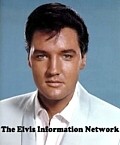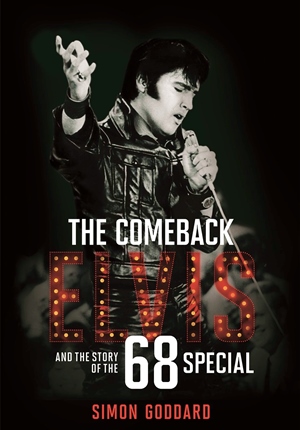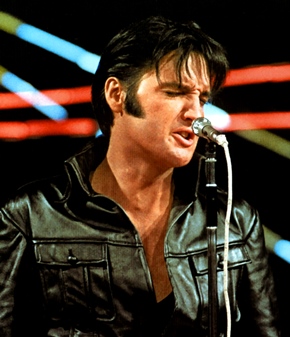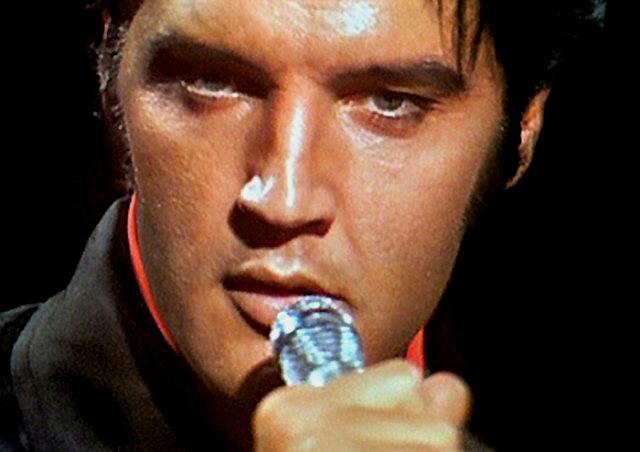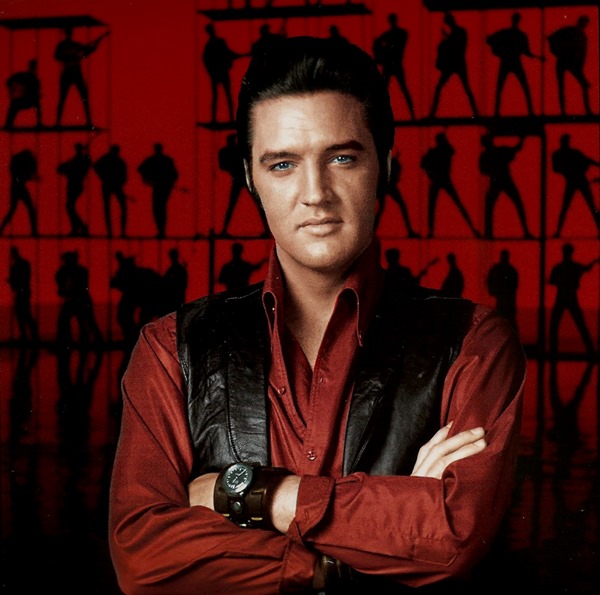 |
 |

The ReviewFor what is a man advantaged if he gain the whole world but lose himself or be cast away.’’ Luke 9:25 Anyone familiar with Simon Goddard's earlier works - he has written books about Bowie, The Rolling Stones, Morrissey and The Smiths - will know that his writing is colourful, entertaining and dotted with potent instances of esoteric hyperbole. Goddard's neo-esoteric style is decidedly offbeat and relies on social history to contextualise his story. For these reasons some readers will find his dissertation about Elvis disconcerting. With this in mind, anyone reading Goddard's treatise on Elvis' legendary Comeback Special should be prepared for what is one hell of an intellectively challenging and dizzy rollercoaster of a ride. As told by Simon Goddard, Elvis' comeback is a play in three acts. The first two acts set the scene for its transformative denouement in the final act, the Comeback Special itself. Act I is focused on Elvis' life and lifestyle from March 1960 told in the context of social events that were happening around him. Act II brings to life individuals who symbolised the right, the wrong and the angst of the free loving, turbulent 60s. They were civil rights leader, Martin Luther King; his disaffected, racist assassin, James Earl Ray; entertainer Harry Belafonte a Black American, the subject of uproar when fellow entertainer, Petula Clark, a white woman, touched his arm on national television; Senator Robert (Bobby) Kennedy; key players in Elvis' comeback, Steve Binder and Bones Howe; and the psychopath, Andreas Cornelius van Kuijk. What Goddard's book is about, and how challenging it can be, is best illustrated by his chapter titles and examples of his prose. The chapter titles in the Comeback Special include The Four Scoursers of the Apocalypse, The Burning of Los Angeles, Hellywood, The Prisoner, Siesta Fiesta, the Patsy, Psychomas, and Eli, Eli, Lama Sabachthani?. Many chapters are only a few pages long, which I found to be a tad irritating. In the first two parts of The Comeback, the author is often merciless. His clinically precise description of the Colonel in the chapter titled Psycho is one of the most brutal you will ever read:
Goddard doesn’t only take issue with the Colonel and his handling of his 'property', but at one point has a branch of the American armed services clearly in focus:
The author surmises how other events in Elvis’ life played out. For instance, how unstable was Elvis and Priscilla’s relationship and how soon did their marriage unravel?:
At another point Goddard reflects on the malaise of Elvis’ lifestyle in the 60’s:
The author’s ability to distil the macro into clearly identifiable and minimalist or reductive prose is more than impressive. For instance, a central theme in The Comeback is Elvis’ isolation from social forces that were happening outside of his carefully constructed cocoon - while a year of riots, revolution and world-changing rock'n'roll was happening:
Goddard addresses Elvis’ search for meaning and understanding about why he had been reduced to singing to dogs and gals in britches, intertwining it with Elvis’ increasing dependence on prescription medication. In so doing, he forces the reader to contemplate Elvis’ fragile state of mind and plight as he imagines:
The third act of Goddard’s tome takes the reader to the apogee of its titular subject. He deciphers and interprets filming of The Comeback with delightful relish offering up joy, trepidation and shades of grey:
On the filming of The Comeback, Goddard brings the scenes to life in an unrestrained, but observant, potpourri of narrative imagery. About the choreographed portion of the Special, Goddard ruminates:
As for the ‘sit-down’ jam sessions, Goddard revels in Elvis and his group and the piece of music history they were creating, and celebrates Elvis’ mastery in singing the show’s finale:
Whatever Elvis’ feelings at the time of filming The Comeback Special, it is viewed through the Goddard lens as akin to a world heavyweight boxing title fight, the pinnacle of a combatant’s career:
Once the mountain has been conquered, the author is reflective in describing Elvis’ triumphant return, covertly arguing that it was supreme and possibly absolute:
The author insightfully previews what the day after....... the aftermath, meant:
You will have guessed by now that Simon Goddard’s The Comeback Elvis and the Story of the 68 Special is not your typical Elvis book release. The author's narrative has a rich texture of socio-cultural reflection as he tugs at, stretches, reforms, deconstructs, and then reconstructs the Elvis of the 1960s in ways not experienced since the seminal Elvis writings of Dave Marsh and Greil Marcus. Yes, Goddard’s prose is often over-the-top, but despite this it exudes an inherent charm. While the research and deep reflection offered by the author will elicit a mix of respect and sometimes bewilderment from the reader, it always provides much “food for thought”. There are two photographic sections in the book displaying a majority of glorious color images. While stand-alone components not directly integrated to the narrative in an ongoing sense, their individual images are symbols of the neutering that afflicted Elvis throughout the decade and of the author's message. For instance, the first photo element starts and finishes with a symbol of imprisonment - in the first image of the section eager fans, including Elvis' good friend, cerebral palsy victim Gary Pepper, wait impatiently behind the restrictive "steel bars" of the Memphis train station fence for Elvis to disembark the train after returning from his Army stint in Germany. The photo section closes with a stark black and white image showing Elvis, pondering behind "prison bars" - both images are symbolic of the symbiotic relationship between Elvis and his fans and the plight Elvis faces in his life and career. In contrast, the second photo element opens with a grim reminder of the social unrest afflicting America, a Black American wearing a jacket with a photo of Martin Luther King on its back and the words 'Murdered In Memphis'. The closing image is of a passionate man in a pure white suit with matching white shoes and a red tie, who is reclaiming his crown as he passionately sings the closing song of his Comeback Special, an anthem of hope and pleading for a better world, If I Can Dream. Behind him are the words of his first name, E L V I S, lit up and majestically standing tall - as if the world needed a reminder of who he was! The visual symbolism is clearly that Elvis' journey from imprisonment and irrelevance in a changing world to its musical zenith is complete (at least at that point in time).
The Comeback arrived in bookstores the same week as another book on the same subject, Steve Binder’s Comeback '68 Elvis The Story of the Comeback Special, and both books, while true to their titular subject, are as different in content as you could imagine. Goddard’s work differentiates itself from Binder’s in that Goddard ruminates on “why” Elvis’ legendary special came to be, how the long history of Elvis’ pent up frustration with his endless stream of lame films with puff lyric soundtracks, and an internal awareness of his separation from both contemporary society/social movements and music, led to the reawakening moment before the world when the King reclaimed his crown. Goddard’s tome is a reflection on the creative and psychological forces haunting Elvis during the “swinging sixties” and how they ensured his Comeback had to happen. In contrast, Binder’s more prosaic, sequentially based release is a somewhat mechanical, first-hand behind-the-scenes record of the making of The Comeback Special populated with many great images. Goddard invites intellectual and artistic inquiry and consideration of the consequences of an artist's potential cultural oblivion, while Binder wants you to marvel at the finished product. What they do have in common is that they are both about the defining act of Elvis' career. Despite their different perspectives both have considerable merit, albeit for very different reasons. Similarly, Goddard’s release cannot be compared with Binder’s earlier book (with Joseph Tunzi) on the Comeback Special, Simon Goddard's book includes sections on Transmission (an overview of the musical sequence for the Special), Bibliography, Discography, Permissions, Pictures Credits, Thanks and The Author. It would have benefited from including an Index. Verdict: The Comeback Elvis and the Story of the 68 Special challenges the reader. At times it verges on the abstract, at times it is absurdist, and all the time it is wildly unsettling but irrepressibly riveting. Many will find the author’s obtuse style frustrating, others will marvel at its poetic fluency, clinical precision and the potent and wild images it conjures in one's mind. Regardless, it is a journey most rewarding for those brave enough to go the distance. Goddard's tome is best slowly savoured with an open and inquiring mind. If that fails, a small dose of LSD may be recommended (in this respect please note my earlier comment on political correctness).
|
|
